12 Must-See Places in Las Vegas for Architecture and Design Lovers
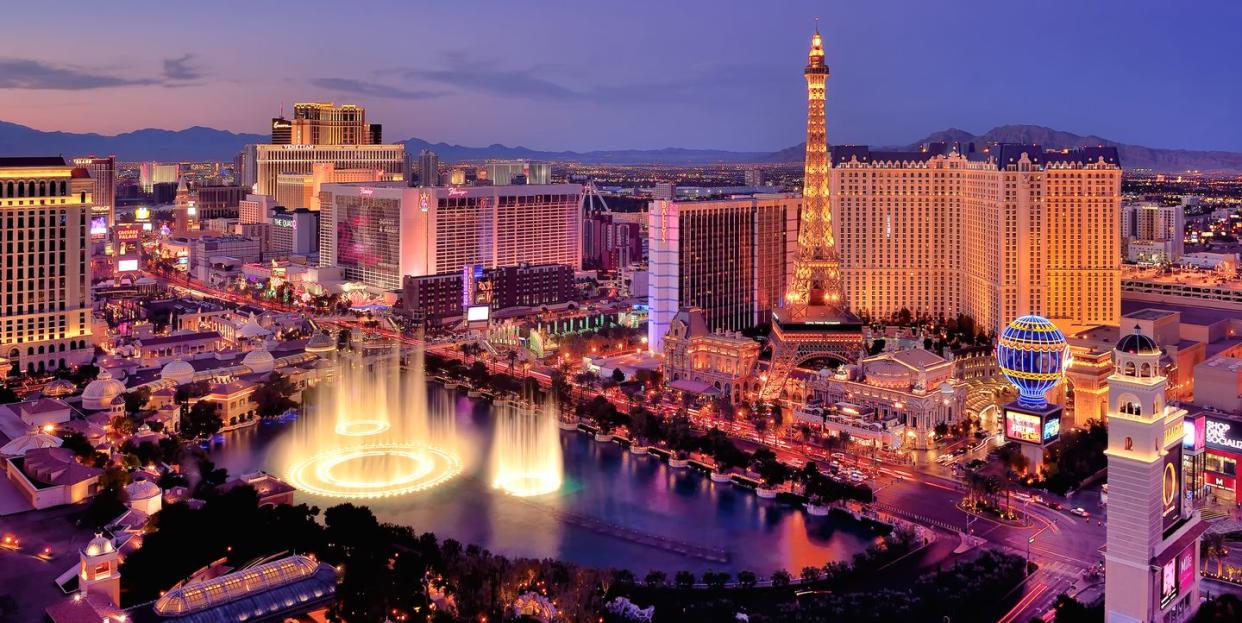
- Oops!Something went wrong.Please try again later.
- Oops!Something went wrong.Please try again later.
- Oops!Something went wrong.Please try again later.
Las Vegas may be known for attractions other than architecture (wink), but Sin City is so much more than nightclubs and casinos. Within just a mile of the world-famous Las Vegas Strip, a.k.a. Las Vegas Boulevard, architecture and design lovers can stroll among soaring creations from the minds of architects Cesar Pelli and Daniel Libeskind, dine in restaurants designed by Ken Fulk and Martin Brudnizki and stay in a lavish suite imagined by French architect Jacques Garcia. Here are 12 of the most beautifully designed sites to explore in Las Vegas.
The Most Iconic Architecture and Design in Las Vegas
Welcome to Las Vegas Sign: Betty Willis
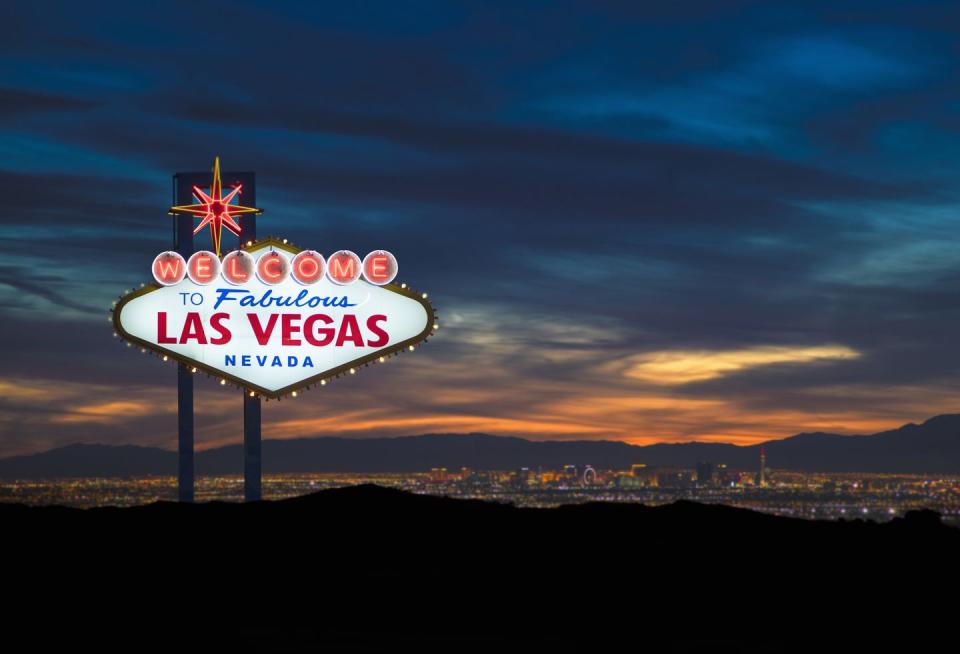
The famous ‘Welcome to Fabulous Las Vegas’ sign is an iconic symbol of the city, but most people don’t know the story of the artist behind it. Erected in 1959 when there were very few female visual artists, Betty Willis created the design while working as an employee for Western Neon, where she also created the signs for Las Vegas hotels The Mint and the Moulin Rouge, America’s first interracial casino. In a town where the skyline has been demolished and revamped numerous times, Willis’s sign has been preserved in its original form and was added to the National Register of Historic Places in 2009. Today, many of Willis’s other memorable signs, including for the Moulin Rouge, can be found at The Neon Museum Las Vegas.
The Shops at Crystals: Daniel Libeskind
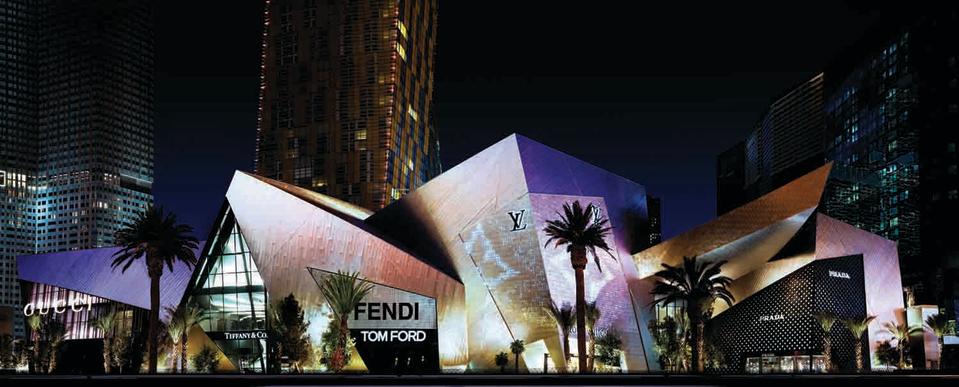
Chances are, you’ve never seen a mall like The Shops at Crystals. Part of the CityCenter complex, the 500,000-square-foot luxury shopping center is a dramatic mix of glass, steel and sharp angles designed by renowned Polish American architect Daniel Libeskind. Also known for his design of the Jewish Museum in Berlin and the master plan reconstruction of the World Trade Center, The Shops at Crystals marked his first project in Las Vegas. From the Strip, pedestrians follow an entryway into the public arcade under a spiraling roof structure, then can make their way to luxury retailers including Louis Vuitton, Balenciaga and Hermes. The building also has LEED Gold Core & Shell certification, making it the world’s largest retail district to achieve such a feat.
The Cosmopolitan of Las Vegas: David Rockwell
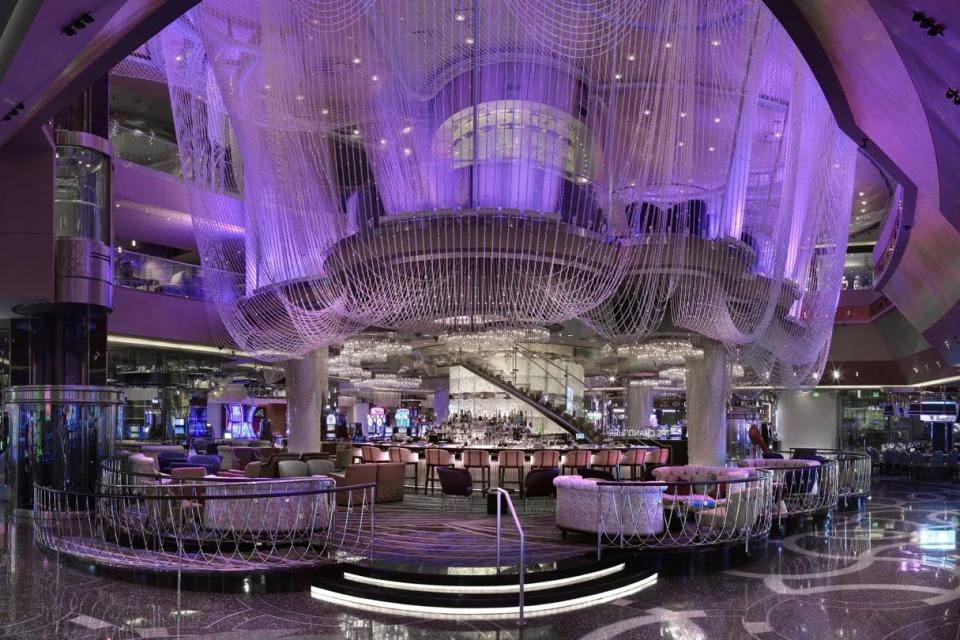
Since opening in 2010, the swanky Cosmopolitan of Las Vegas has made a name for itself as one of the most unforgettable hotels in the city. A team of architects created the final product that is now the Cosmopolitan, including Friedmutter Group who executed the design drawings and Arquitectonica as the principal design firm, but David Rockwell of the Rockwell Group brought much of the eye-popping public areas to life. The team designed the West Lobby, an immersive experience with digital art columns featuring dancers that respond to guest’s movements, and the shimmering, multi-story Chandelier Bar wrapped in 21 miles of crystal beads.
Carbone and Sadelle’s: Ken Fulk
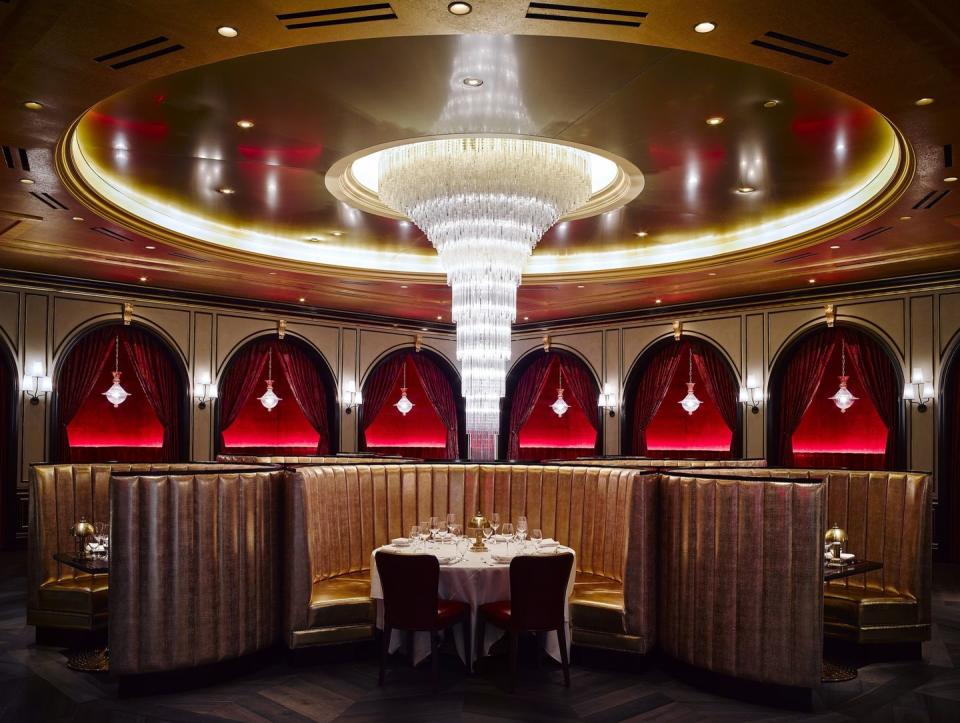
Whimsical designer Ken Fulk brought the New York cool kid aesthetic to Sin City when he collaborated with Major Food Group’s Jeff Zalaznick, Mario Carbone and Rich Torrisi for the 2015 opening of Carbone Las Vegas, with one major difference. While understated elegance is the name of the game in Greenwich Village, the Las Vegas restaurant pulls from the operatic glamour of Vegas in the 1950s. A massive chandelier sourced from a Ferrari dealership hangs in the main dining room, surrounded by intimate red velvet banquettes with dramatic red and gold privacy drapes. It’s a head-turning place to see and be seen.
Fulk’s latest collaboration with MFG is brunch hotspot Sadelle’s Café at the Bellagio. Though it offers American cuisine, the design is decidedly glitzy Parisian bistro, with herringbone wood floors, creamy ocean blue painted walls and coffered ceilings and floor to ceiling windows facing a conservatory.
The Neon Museum Visitors’ Center: Paul Revere Williams
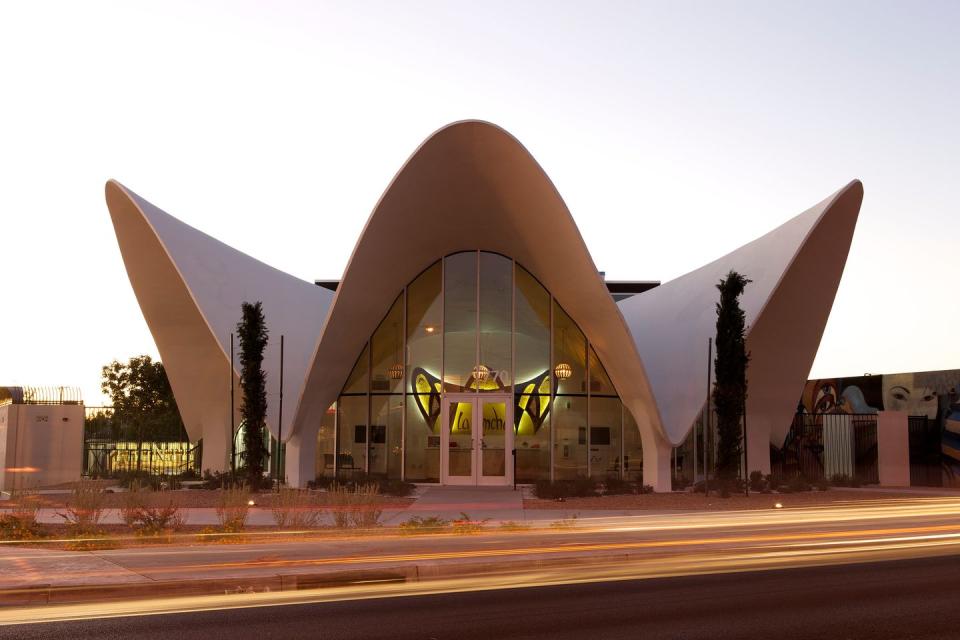
Visitors to the Neon Museum may feel like they’ve stepped into an episode of “The Jetsons” when they arrive at the visitors’ center. The distinctive shell-shaped building, formerly the lobby of the historic La Concha Motel, was designed by acclaimed architect Paul Revere Williams. Originally constructed in 1961 on Las Vegas Boulevard South, the La Concha Motel lobby is an example of mid-century modern design characterized by curvilinear space age shapes. Saved from demolition in 2005, the lobby was moved in 2006 to its current location as the Neon Museum’s Visitors’ Center. As one of the most admired and successful architects of the 20th century, Paul Williams’ notable commissions include the Los Angeles County Stanley Mosk Courthouse, the Beverly Hills Hotel (the hotel sign is in his handwriting) and the Guardian Angel Cathedral also in Las Vegas. As the first documented African American member and fellow of the American Institute of Architects, he was a pioneer in the field of architecture.
Lou Ruvo Center for Brain Health: Frank Gehry
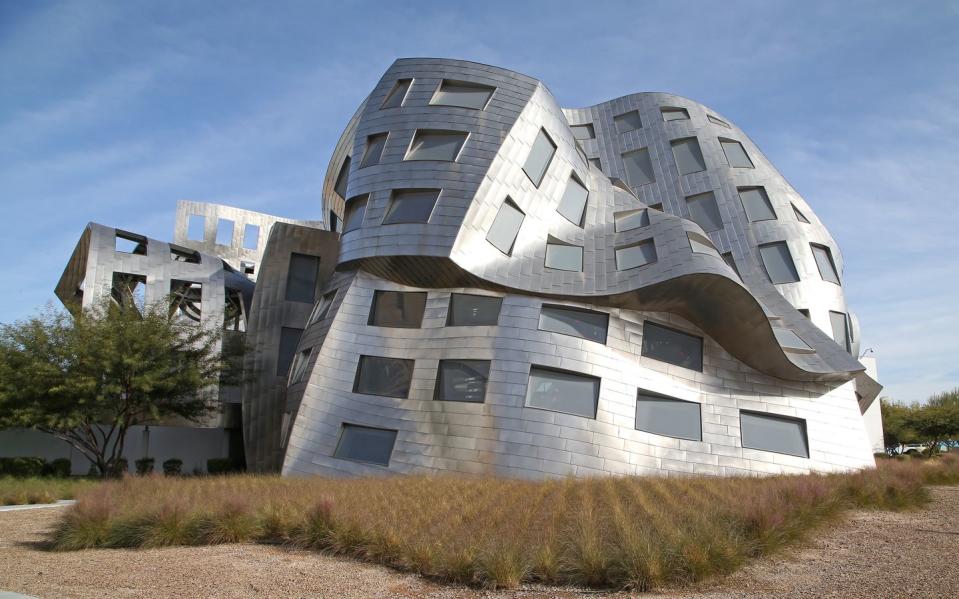
Though obviously not a tourism destination, the Frank Gehry-designed Lou Ruvo Center for Brain Health is a site to see with your own eyes. The mantra behind the research center for degenerative brain diseases is “Keep Memory Alive,” which inspired Gehry to design a place in Las Vegas that will be memorable and invite people to visit and support. The focal point is a building housing various event spaces made from swooping masses of stainless-steel arcs and curves, illuminated by natural light from nearly 200 windows.
Vdara Hotel & Spa: Rafael Viñoly
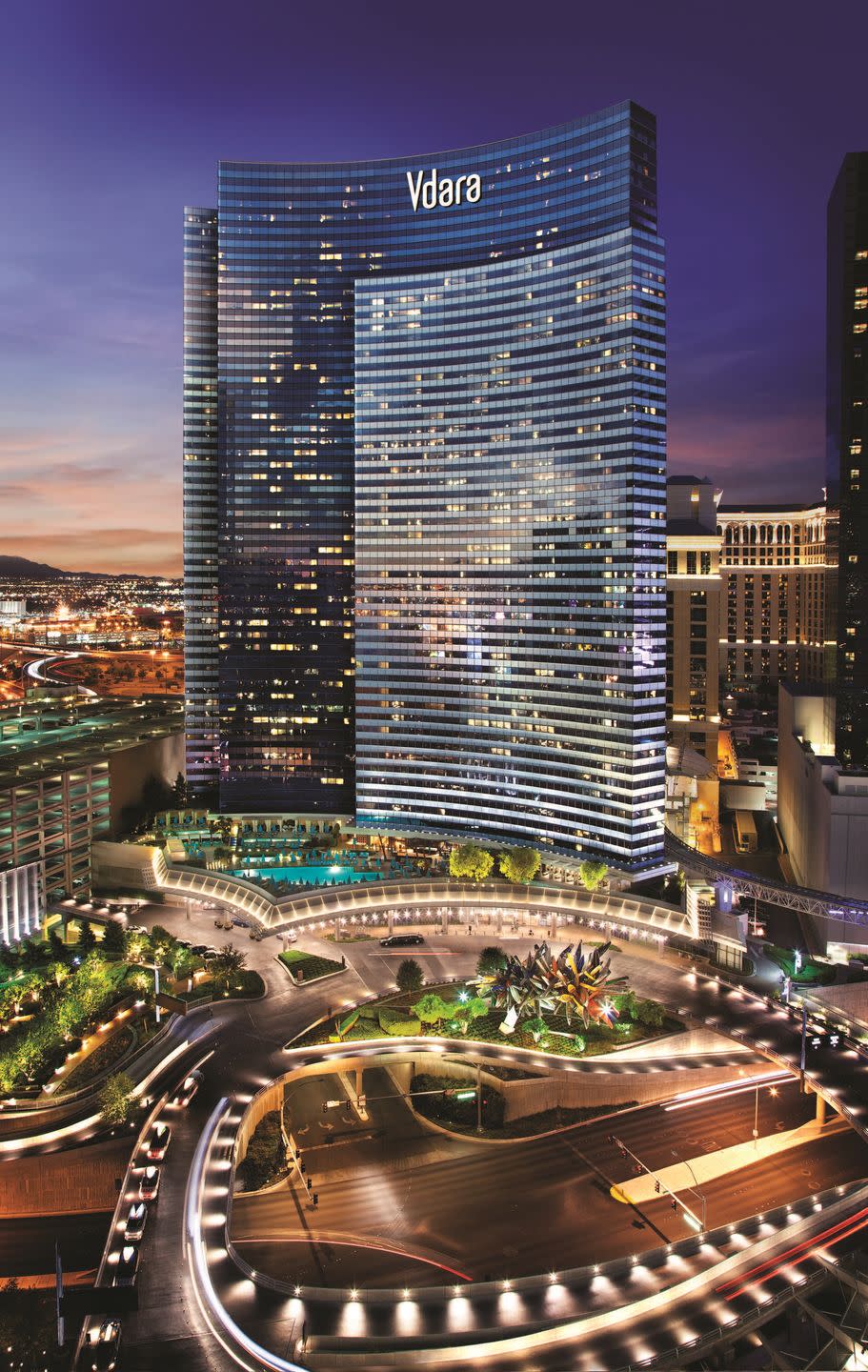
Uruguayan American architect Rafael Viñoly left a global legacy of modernist-designed buildings before his unexpected death in early March, and one of his few hospitality projects is the Vdara Hotel & Spa at CityCenter. The sleek, 148,800-square-meter, 57-story hotel is noticeable for its slender profile and crescent shape, aligned with the circular drive out front. Alternating bands of reflective and etched glass create a shimmering texture on the facade of the building, while also reflecting the colorful desert sunsets and lights of the Las Vegas Strip. In keeping with the sustainability efforts of CityCenter, the all-suite Vdara is LEED Gold certified and was the first hotel in Las Vegas (along with Aria Resort) to achieve this distinction in 2009.
Mayfair Supper Club and Bavette’s Steakhouse: Martin Brudnizki
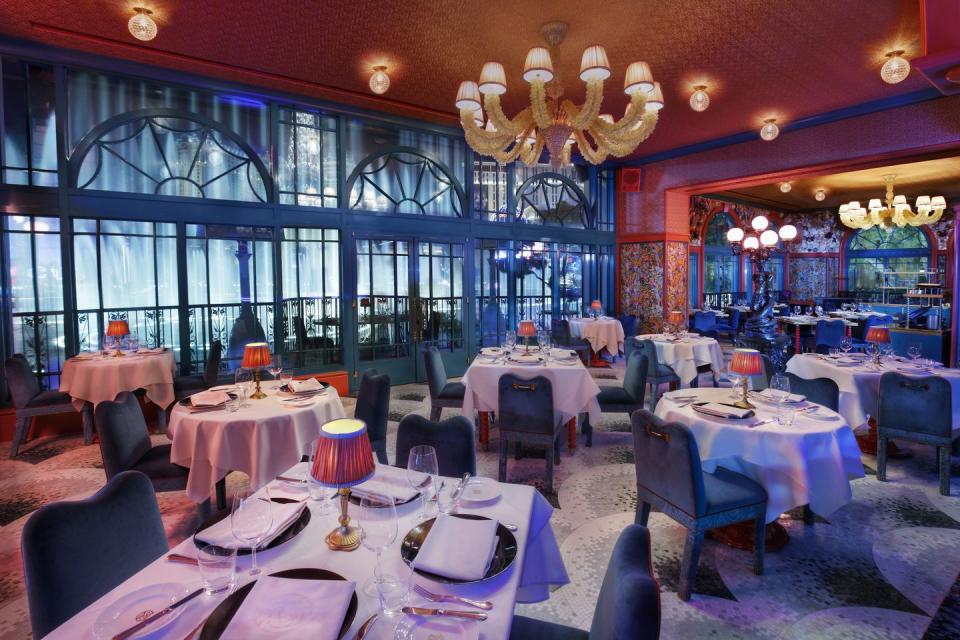
Stockholm-born interior designer and architect Martin Brudnizki has a wide ranging portfolio of some of the most legendary hospitality clients in the world including Eden Rock St. Barth, Harry’s Bar in London and New York’s Beekman Hotel, but for his Las Vegas projects he dialed the fantasy up a notch. Bavette’s Steakhouse at the Park MGM is reminiscent of an elevated version of “Cheers” with a rich palette of burgundy velvet and blue tile, brass Tiffany-style table lamps and dark wood paneling. Walls are lined with gilded mirrors, black and white historic photos and oversized murals by David Plunkert. His newest project is Mayfair Supper Club at the Bellagio, a glamorous fine dining restaurant and entertainment venue with incredible views of the world-famous Bellagio fountains. The space is layered with sea-inspired design elements like glass mosaics, walls textured with seashells and dried coral and sparkling chandeliers.
NoMad Hotel and NoMad Restaurant: Jacques Garcia
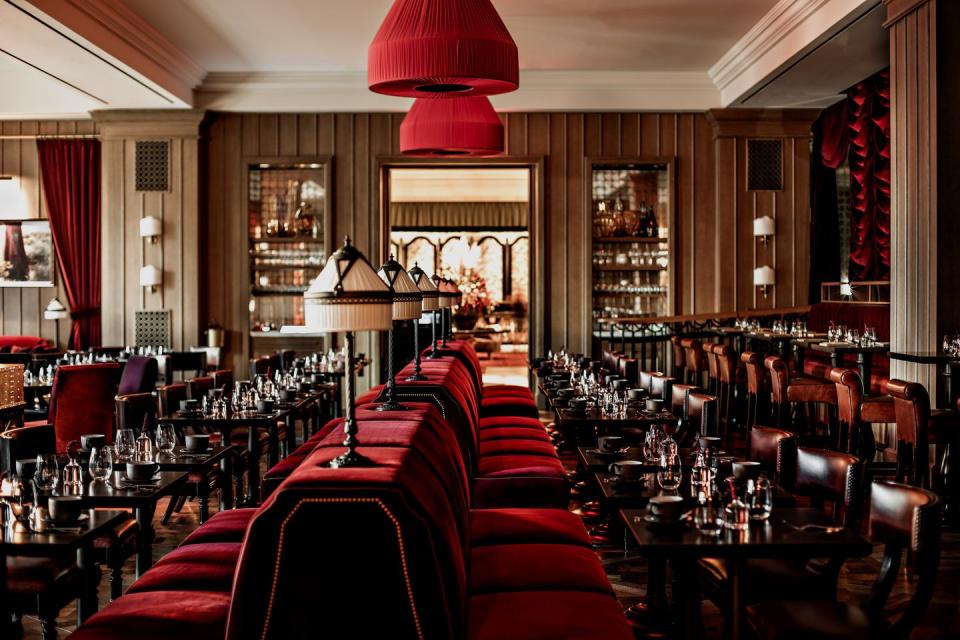
French designer Jacques Garcia is known for his opulent and baroque style that transformed Parisian hotels in the late 1990s, and you can now get a taste of it for yourself at the NoMad Hotel Las Vegas and NoMad Library restaurant. The hotel offers a residential feel, like you’ve just been handed the keys to a godparent’s Parisian pied-à-terre, with oak floors, clawfoot tubs and rich chocolate hued furniture. But, the showstopper is the NoMad restaurant. Set in what feels like an 18th-century era library, the soaring multi-level space features more than 25,000 books on backlit shelves from David Rockefeller’s personal collection. It feels both massive yet intimate, perfect for hushed conversations over filet mignon and the finest French cognac.
ARIA Resort & Casino: César Pelli
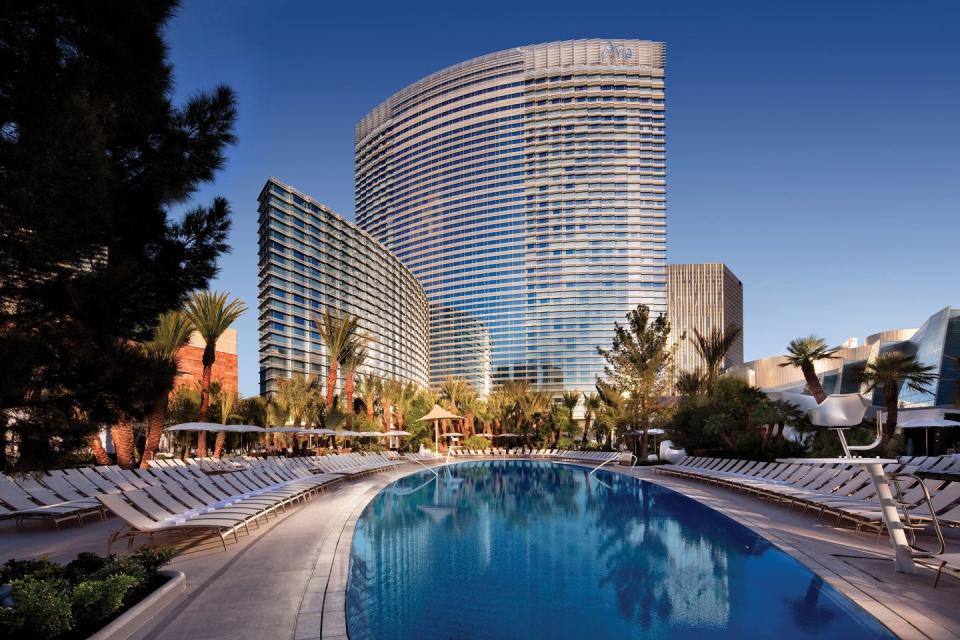
Built by Argentinian American architect Cesar Pelli’s firm in 2009, the ARIA Resort & Casino is widely credited with changing the skyline of Las Vegas as one of the first non-themed hotels on The Strip. Instead, the focus is on the beauty of the architecture itself: two counterposing curved glass towers, a shimmering facade and landscaped pools. It’s also home to a permanent art collection from some of the world’s most prominent artists and sculptors including Maya Lin, Tony Cragg and Sanford Biggers. When it opened, the ARIA was one of the greenest hotels in the world and remains the largest hotel (over 4,000 rooms) to achieve a LEED Gold rating thanks to water efficiency and energy-saving features—including a curtain wall that uses glass coatings that let in daylight while blocking the sun’s heat producing rays.
Javier’s Cantina: Dodd Mitchell
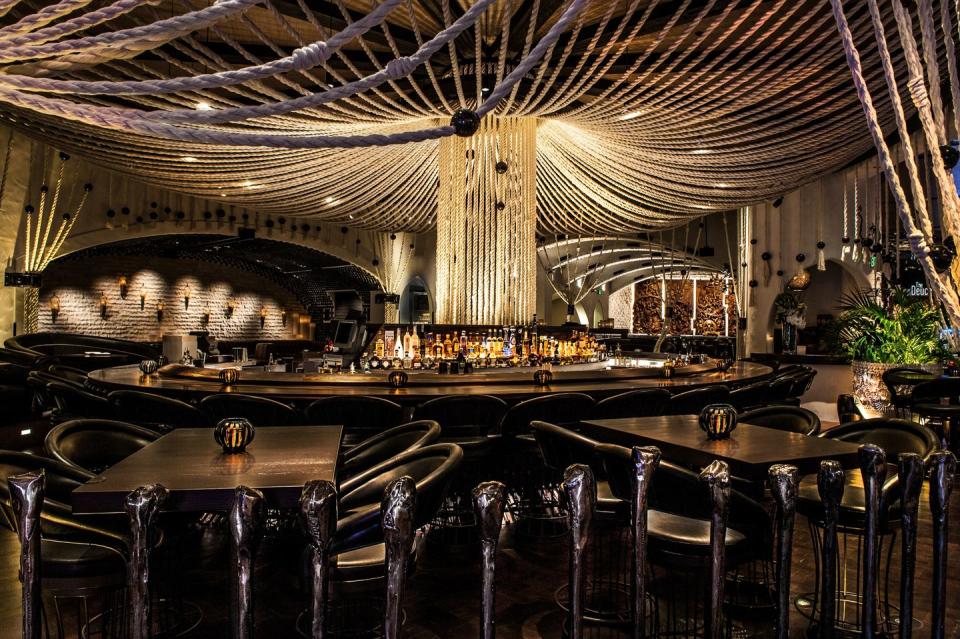
For a Mexican restaurant in Las Vegas, it could be all too easy for the design to slip into tacky kitsch, but that’s not the case at Javier’s Cantina. Designed by Dodd Mitchell design firm, the space is inspired by Moorish elements: curved ceilings and archways, white stucco walls and tile work. Sheaths of rope cascade from the ceiling over the bar to form the shape of a chandelier, and hand-crafted pottery from Guadalajara and vintage belts along the windows and door frames are dotted throughout the restaurant. The statement piece is a 25-foot work of art dubbed “the world’s largest piece of chainsaw art” by artist J. Chester Armstrong; the five, 5x10 foot panels depict the Mayan creation myth and modern Mexican history. Hundreds of Dia de los Muertos skeletons bring guests through a five-part journey from the Tree of Death to the Tree of Life.
Veer Towers: Helmut Jahn
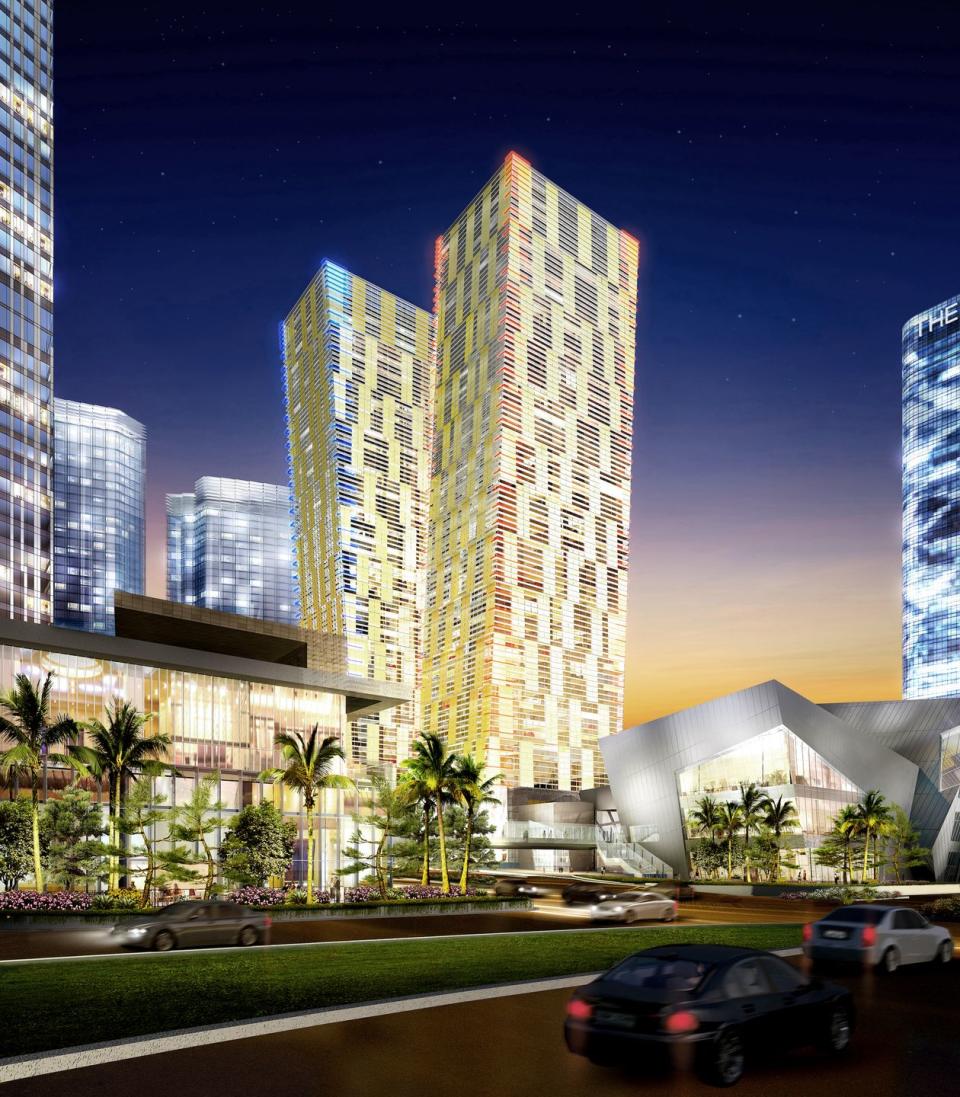
No, you didn’t have one too many cocktails. The shimmering gold Veer Towers are actually tilted. Designed by Murphy/Jahn Architects, the Veer Towers are a pair of condominium towers in the CityCenter complex that tilt in opposite directions at a five-degree angle. The design is simple and straightforward, focusing on the building performance and functionality as a LEED Gold residence. Since the building’s main architectural characteristic may be concerning to both dwellers and those walking below, a sophisticated application of reinforced and post-tensioned concrete ensures that these very stable towers won’t lean any further than designed.
You Might Also Like

